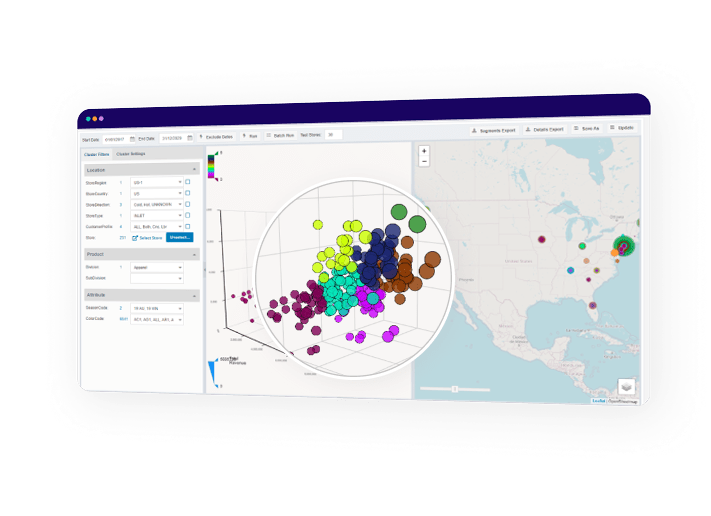On average, we humans generate 2.5 quintillion bytes of data every day. For companies that want to go beyond the traditional spreadsheet which cannot handle this ocean of information efficiently, there are statistical methods such as cluster analysis that can help.
What is cluster analysis?
Cluster analysis is a statistical umbrella term for methods that classify data points according to their attributes. The idea is that data points within a group share similar properties and each group is different (statistically speaking) from another.
From marketers using it for running targeted campaigns based on customer segments, investors building diversified financial portfolios, and supply chain managers planning their replenishment, cluster analysis is a powerful tool for all businesses.
For instance, the Retail industry segments its customers based on shopping behavior (e.g., market basket contents and size, service expectations), groups its stores based on sales performance and other attributes (e.g., revenue per m2, store traffic, footfall), categorizes its product portfolio based on price (e.g., average sales price per category) and more.
Here’s a fantastic blog explaining the approaches retailers use to make better decisions with clustering analysis.
How Is Cluster Analysis Used In Retail?
Cluster Analysis is commonly a preprocessing step before Assortment Planning, Promotion Planning, or Markdown Optimization.
Customer segmentation, for example, might be an initial step for a promotion plan: You can offer customized promotions to your customer segments by knowing their differentiated expectations.
Assortment planning is another place where Cluster Analysis can help define store groups based on their characteristics, localize assortment plans accordingly, and remove the burden of disparate plans for each store.
It is not intelligent to plan by averages when you are responsible for the performance of a large store chain. Averages hide meaningful variances across different parts of the business and cause missed opportunities for better financial results.
When measuring performance, comparing store size and sales is just the beginning. You should also consider their demographics: one might be in the city center while the other in a suburb, each catering to customers with different footfalls, unique buying patterns, and differentiated purchasing power.
We can suggest many more meaningful dimensions to cluster your customers, but the message remains the same: there is a technology for segmenting your stores or customers, or products for more profitable business decisions.
A Powerful Platform for Clustering
The Solvoyo Platform offers state-of-the-art clustering analytics for retail’s best practices:
- Selection of the most suitable attributes, feature set, and clustering method for each case
- Optimal-seeking methods, dealing successfully with the curse of dimensionality.
- Interactive what-if analysis of the results
- Advanced but intuitive visualization of the clusters
Solvoyo is a Gartner-recognized vendor that supports integration with many commercial 3rd-party ERP systems as well as homegrown systems. Our clustering capabilities support our other services that range from Demand and Supply Planning to Store Replenishment.










